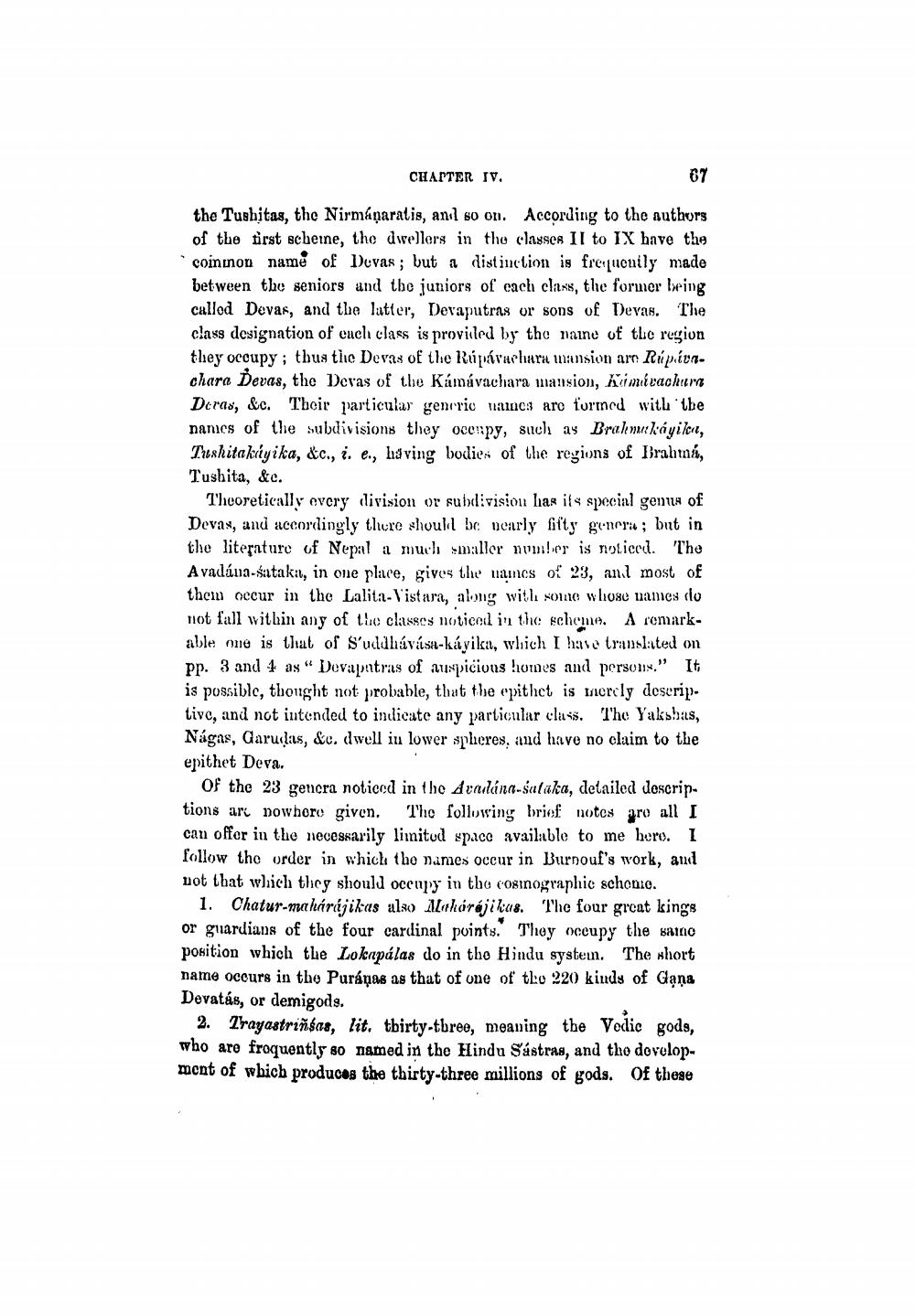________________
CHAPTER IV.
67
the Tushitas, the Nirmáparatis, and so on. According to the authors of the first scheme, the dwellers in the classes II to IX have the coinmon name of Devas; but a distinction is frequently made between the seniors and the juniors of each class, the former being called Devas, and the latter, Devaputras or sons of Devas. The class designation of each class is provided by the name of the region they occupy; thus the Devas of the Rúpávachara mansion are Rúpávachara Devas, the Devas of the Kámávachara mansion, Kámárachura Deras, &c. Their particular generic names are formed with the namics of the subdivisions they occupy, such as Brahmakayika, Tushitakayika, &c., i. e., having bodies of the regions of Brahmná, Tushita, &c.
Theoretically every division or subdivision has its special genus of Devas, and accordingly there should be nearly fifty genera; but in the literature of Nepal a much smaller number is noticed. The A vadána-sataka, in one place, gives the names of 23, and most of them occur in the Lalita-Vistara, along with some whose names do not fall within any of the classes noticed in the scheme. A remarkable one is that of S'uddhávása-káyika, which I have translated on pp. 3 and 4 as " Devapatras of auspicious homes and persons." It is possible, thought not probable, that the epithet is merely descriptive, and not intended to indicate any particular class. The Yakshas, Nágas, Garudas, &c. dwell in lower spheres, and have no claim to the epithet Deva.
Of the 23 genera noticed in the Avadána-sataka, detailed descriptions are nowhere given. The following brief notes are all I can offer in the necessarily limited space available to me here. I follow the order in which the names occur in Burnouf's work, and not that which they should occupy in the cosmographic scheme.
1. Chatur-mahárájikas also Makórójikas. The four great kings or guardians of the four cardinal points. They occupy the same position which the Lokapálas do in the Hindu system. The short name occurs in the Puránas as that of one of the 220 kinds of Gana Devatás, or demigods.
2. Tragastriñsas, lit. thirty-three, meaning the Vedic gods, who are frequently so named in the Hindu Sástras, and the development of which produces the thirty-three millions of gods. Of these




